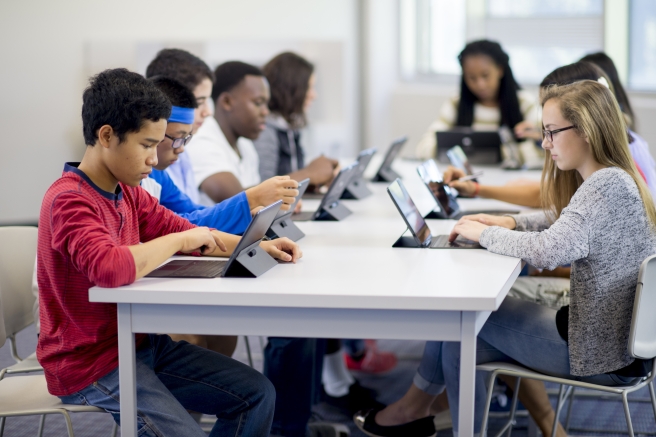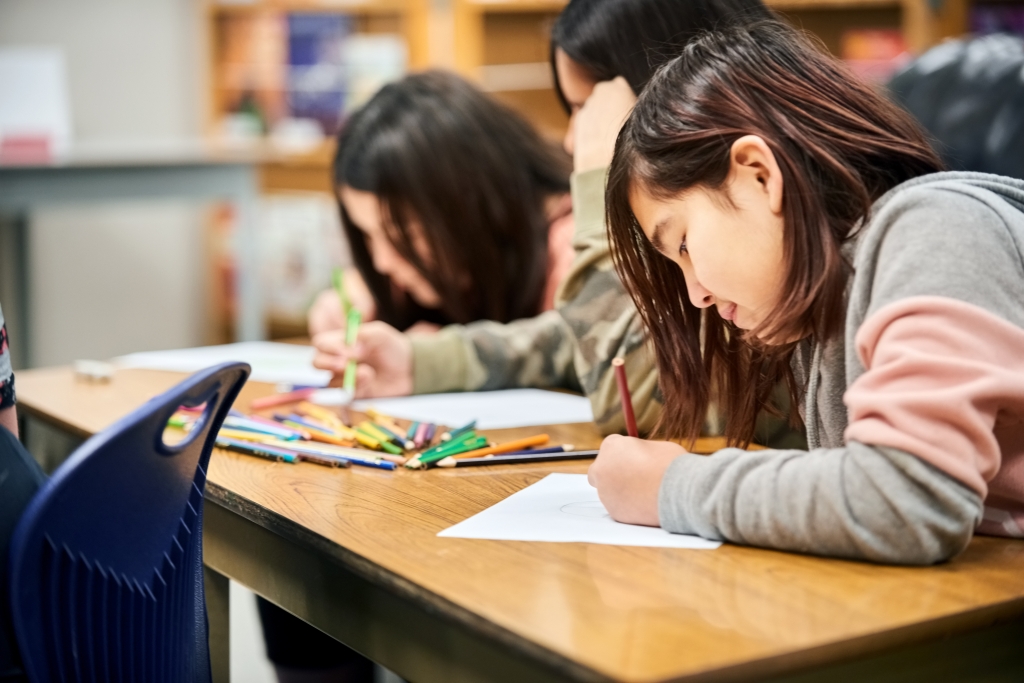Seriously Folks—Why Are We Taking Learning Sitting Down?

Seriously Folks—Why Are We Taking Learning Sitting Down?
It's been on the news, in the papers, and it should come as no surprise that movement is good for our bodies, increases oxygen flow, and promotes our ability to learn and be productive. But despite all we know, a typical school day still tends to be largely sedentary, with screen time taking on an increasingly important role for many students since the onset of the COVID-19 pandemic.
One’s gotta ask—Why are we taking this sitting down?
To be sure, it's never been our (educators’) job before to mitigate the health impacts of sedentary behaviour or screen use on students. The World Health Organization has developed guidelines for minimizing the health impacts of sedentary behaviour, focusing on overall sedentary behaviour and recreational screen time. These health guidelines did not provide recommendations specifically related to sedentary behaviours at school—where teachers and students spend the majority of their waking hours!
To address this key information gap, PHE Canada was part of a project led by the Sedentary Behaviour Research Network (SBRN). The result is the release of the world’s first evidence-based recommendations for school-related sedentary behaviours.
The goal of these recommendations is to provide guidance on how much sedentary behaviour is too much and to kick-start a new set of classroom norms around movement and lesson plans that incorporate movement, including school-related activities such as homework.

To be sure, our classrooms and lesson plans are currently designed to keep students in their seats and altering this approach without careful planning can run the risk of disrupting learning. PHE Canada knows as well that it is challenging to integrate changes on top of the other expectations of teachers, especially in typical school schedules based around short learning blocks. And with more and more schoolwork moving online, it is increasingly challenging to limit screen-based learning. A lot of administrative support, creativity and out-of-the-box thinking will need to be employed to start moving in the other direction.
These recommendations provide a starting block for school administrators and empower educators and students to move forward in this work. And remember, as you do move forward, tap a Physical and Health Educator for inspiration—they’ve been doing this work all along!
Who do these recommendations apply to?
These recommendations are for children and youth attending school (typically 5–18 years of age) inclusive of gender, culture, nationality, and socio-economic status.
Who can use these recommendations?
Anyone with an interest in student health and well-being can use these voluntary recommendations to counter sedentary behaviours—including students, educators, school administrators, policymakers, parents/guardians, caregivers, physicians and other healthcare providers.
What are the recommendations?
A healthy school day includes:
- Breaking up periods of extended sedentary behaviour with both scheduled and unscheduled movement:
- At least once every 30 minutes for ages 5–11 years
- At least once every hour for ages 12–18 years
- Incorporating different types of movement into homework whenever possible
- Limiting sedentary homework to no more than 10 minutes per day, per grade level.

Regardless of the location, school-related screen time should be meaningful, mentally or physically active, and serve a specific pedagogical purpose that enhances learning compared to alternative methods. When school-related screen time is warranted:
- Limit time on devices, especially for students 5–11 years of age.
- Take a device break at least once every 30 minutes.
- Discourage media multi-tasking in the classroom and while doing homework.
- Avoid screen-based homework within an hour of bedtime.
Replacing sedentary learning activities with movement-based learning activities and replacing screen-based learning activities with non-screen-based learning activities can further support students’ health and wellbeing.
How can these recommendations be implemented?
Educators, school administrators, policymakers, parents/guardians, caregivers, physicians and healthcare providers can implement these recommendations using the four Ms approach:
- Manage sedentary behaviour.
- In the classroom and during homework, include light activities that require movement of any body parts and moderate-to-vigorous activities that require greater physical effort.
- Encourage Meaningful screen use.
- Prioritize face-to-face interactions over screen use.
- Use screens when they are the best pedagogical tool for the job and likely to enhance learning.
- Prioritize screens for mental and physical engagement, rather than for passive viewing.
- Turn screens off when not in use, including background TV or videos while doing school or homework.
- Avoid screen use during meal and snack times.
- Avoid using screens as the default method for content delivery or classroom management.
- Encourage students to review and self-regulate their screen use, and plan time for outdoor play and physical activity.
- Educators, healthcare providers, parents and caregivers should Model healthy and meaningful screen use.
- Monitor for signs of problematic screen use and follow up with a physician or healthcare provider if concerns arise. Signs of problematic screen use can include:
- Complaints about being bored or unhappy without access to technology
- Difficulty accepting screen time limits
- Screen use that interferes with school, family activities, sleep, physical activity, offline play, or face-to-face interactions
- Negative emotions following time spent playing video games, texting or using social media
Where can I find the recommendations?
The recommendations are available at sedentarybehaviour.org.
Are the recommendations available in other languages?
Yes! Visit sedentarybehaviour.org for a list of all the current translations, including French, Inuktitut, and several others. If you’d like to help us to translate the recommendations into additional languages, please contact us at [email protected].
How were these recommendations created?
These recommendations were developed by an international expert panel convened to develop recommendations to counter sedentary behaviour. The recommendations were informed by research on the relationship between sedentary behaviour and both health and academic outcomes, as well as existing national and international sedentary behaviour guidelines for school-aged children and youth. The recommendations considered the above research, the views of the expert panelists, and feedback from key stakeholders. Full details on the process used to develop these recommendations can be found in our recent publication in the International Journal of Behavioural Nutrition and Physical Activity and at sedentarybehaviour.org.









